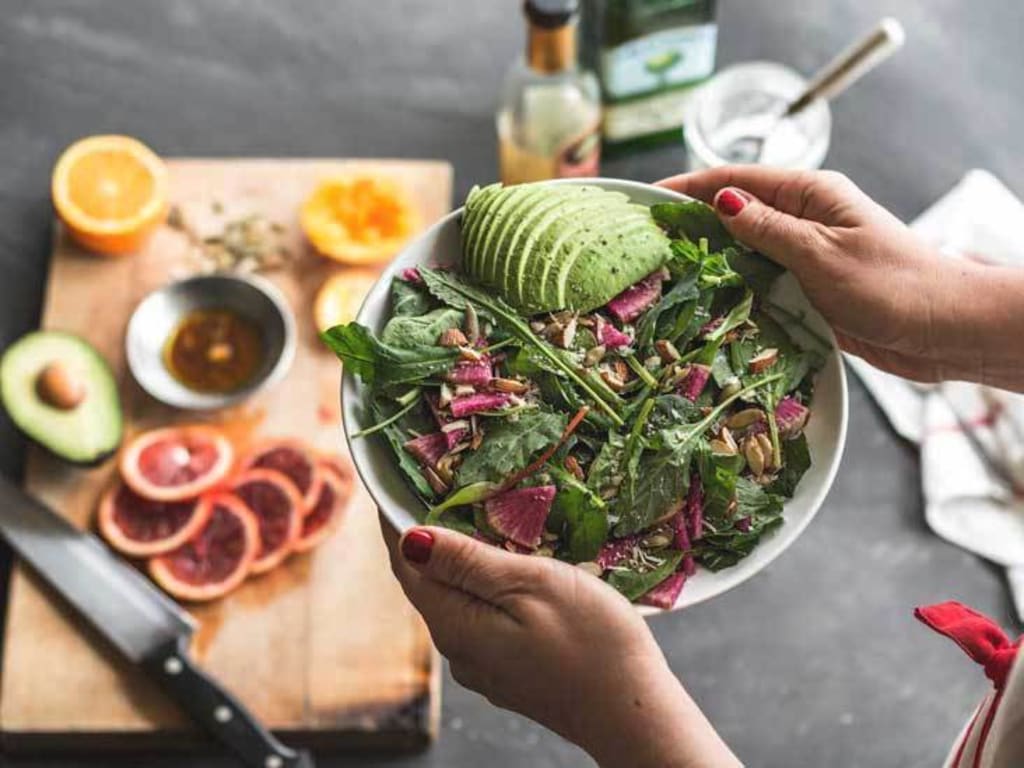10 Useful Health Tips for Those Over 40
Tips for maintaining health after 40

Now and then we all have the urge to binge on things we should not be eating and drinking. However, if you indulge occasionally, it does not mean that afterward you should punish your body by stretching it to the max exercising. As long as you basically keep up with a healthy diet and regular exercise, you can treat your body now and then to the things you have been craving. Keep making healthy meals when you are home like szechuan shrimp, and you’ll be on the right track with your healthy lifestyle.
You might consider including some weight training in your exercise routine. Using weights two or four times a week will help your body tone up and build muscle, and maintain bone density. It will also make it easier for you to keep your weight balanced—and having a lean body with more muscle means that your body is more metabolically active, and will burn more calories all throughout the day.
Scale Back the High-Intensity Workouts
As our bodies age, we need to let them adjust to the many different changes that are happening. So it is advisable to do regular exercises, but you should stop doing high-intensity workouts, which stretch your body to the limit. With time our bodies need to relax more, and not go all out to the max. As long as we keep doing exercises we can keep up with, and add in some weight training to keep the body fit and trim, we will feel good at the age we are. Then all you need to do is keep to a healthy diet, and you should feel younger than your years.
Balance Your Blood Sugar
It is important to keep an eye on your blood sugar, especially if you notice that you have mood swings, less energy, and you cannot sleep at night. The way to control the blood sugar in your body is to watch what you’re eating. You can begin by lowering your carb intake, and increase you fiber intake. It is also important to include low-glycemic foods to your diet like seafood, meat, eggs, oats, barley, beans, lentils, legumes, sweet potatoes, corn, yams, most fruit, and vegetables that are not starchy. You will also benefit from eating foods that are rich in magnesium like dark leafy greens, whole grains, fish, dark chocolate, bananas, avocados, and beans. Remember to keep your stress levels in control, and get enough qualitative sleep.
Cut Back on Caffeine
As we get older it is best to cut back on caffeine. The suggested caffeine intake per day is between 35 – 80 mg, but no more. Too much caffeine intake can create such unpleasant symptoms as restlessness, anxiety, irritability, lack of sleep, headaches, nausea, diarrhea, and abnormal heart rhythms. Caffeine occurs naturally in many plants, among them coffee beans, tea leaves, and cocoa nuts. These things can be found in many different food products including beverages. The most common sources of caffeine are coffee, tea, sodas, chocolate, and even some over-the-counter medicines. So it is important to know how much caffeine you ingest per day, and if you’re particularly sensitive to caffeine, then it is important to cut back, or even eliminate it from your diet. Cutting back on caffeine should be done gradually, and you can begin by drinking decaffeinated coffee, tea, and soda. When you buy over-the-counter medication, be sure to check on the caffeine content, and see if these medications come caffeine-free.
Fuel Energy Dips With Whole Food
No matter how old people are, the one thing they all have in common is energy dips and cravings. When you are feeling run down, and you cannot get back into your normal routine, it is time to start eating protein rich or healthy fat foods such as nuts, chicken, or fish. Make sure you have a healthy breakfast every day that includes foods like fresh fruit, whole grain, hot or cold cereal with nuts and seeds, whole grain bread, and you’ll be ready to start your day. Make sure to stay hydrated and drink plenty of water. Choose to eat power foods that will get you and keep you going like almonds, avocado, watercress, and other leafy greens, quinoa, flax seeds, beans, dates, berries, sea vegetables, and young whole soy beans.
Schedule Sleep
As we age it is important for our bodies to refuel each night, and for us to get at least seven to eight hours of sleep. To get the sleep we need it is important to have a scheduled sleep, so that we go to sleep at the same time each night and wake up at the same time each morning. If we keep to a sleep schedule, our bodies adjust with time, and we are able to have a regular night’s routine. Make sure your bedroom is ready for sleep by having all electronics shut down, the room cool, and dark. Don’t drink any alcohol right before going to bed, and drink less fluids at night so you can get uninterrupted sleep.
Eat Every 4-6 Hours
A healthy breakfast every morning will get your metabolism started. However to keep going throughout the day, you should try to eat every four to six hours to keep you body fueled, and to give you enough energy. Make yourself some delicious sauteed zucchini.
Include Plenty of Proteins
Our bodies require 20 to 30 grams of protein at every meal. Some of the best protein sources are seafood with healthy omega-3 fatty acids and white-meat poultry. From dairy products you should have milk, cheese, and yogurt, which all provide calcium and Vitamin D. Eating an egg a day will keep you going, and don’t forget to include beans, pork tenderloin, soy, and lean beef in your diet.
Antioxidants
You should include plenty of foods that include antioxidants. The good news is for dark chocolate lovers since dark chocolate is nutritious, and includes minerals and antioxidants. Pecans include healthy fats, minerals, and up to 10.6 mmol of antioxidants in 3.5 ounces. Blueberries are packed full of nutrients and antioxidants up to 9.2 mmol per 3.5 ounces. Strawberries will not only provide you with antioxidants, but with plenty of Vitamin C as well. Artichokes not only have antioxidants, but are also a great source of dietary fiber and minerals. Goji berries have vitamins, minerals, and antioxidants. Raspberries provide up to 4 mmol of antioxidants per 3.5 ounces. Kale is a cruciferous vegetable with other members including broccoli and cauliflower. It is rich in Vitamins A, K, and C, and offers 2.7 mmol of antioxidants per 3.5 ounces. Other foods which will fill you up on antioxidants include red cabbage, beans, beets, and spinach.
Omega-3 Fatty Acids
The best foods that will provide you with omega-3 fatty acids are mackerel which can also be eaten smoked at breakfast, salmon, sea bass, sardines, shrimp, and trout.
Vegetarian and Vegan Sources of Omega-3
These foods include seaweed and algae, Chia, hemp, and flax seeds. Other sources are walnuts, soy beans, kidney beans, and soybean oil.
Omega-3 Supplements
To be sure you get your regular dose of omega-3 fatty acids, you can take supplements like fish oil, cod liver oil, krill oil, algae oil, and ALA supplements.
About the Creator
Alyssa Day
The author and Creator ofhttps://club.cooking/






Comments
There are no comments for this story
Be the first to respond and start the conversation.